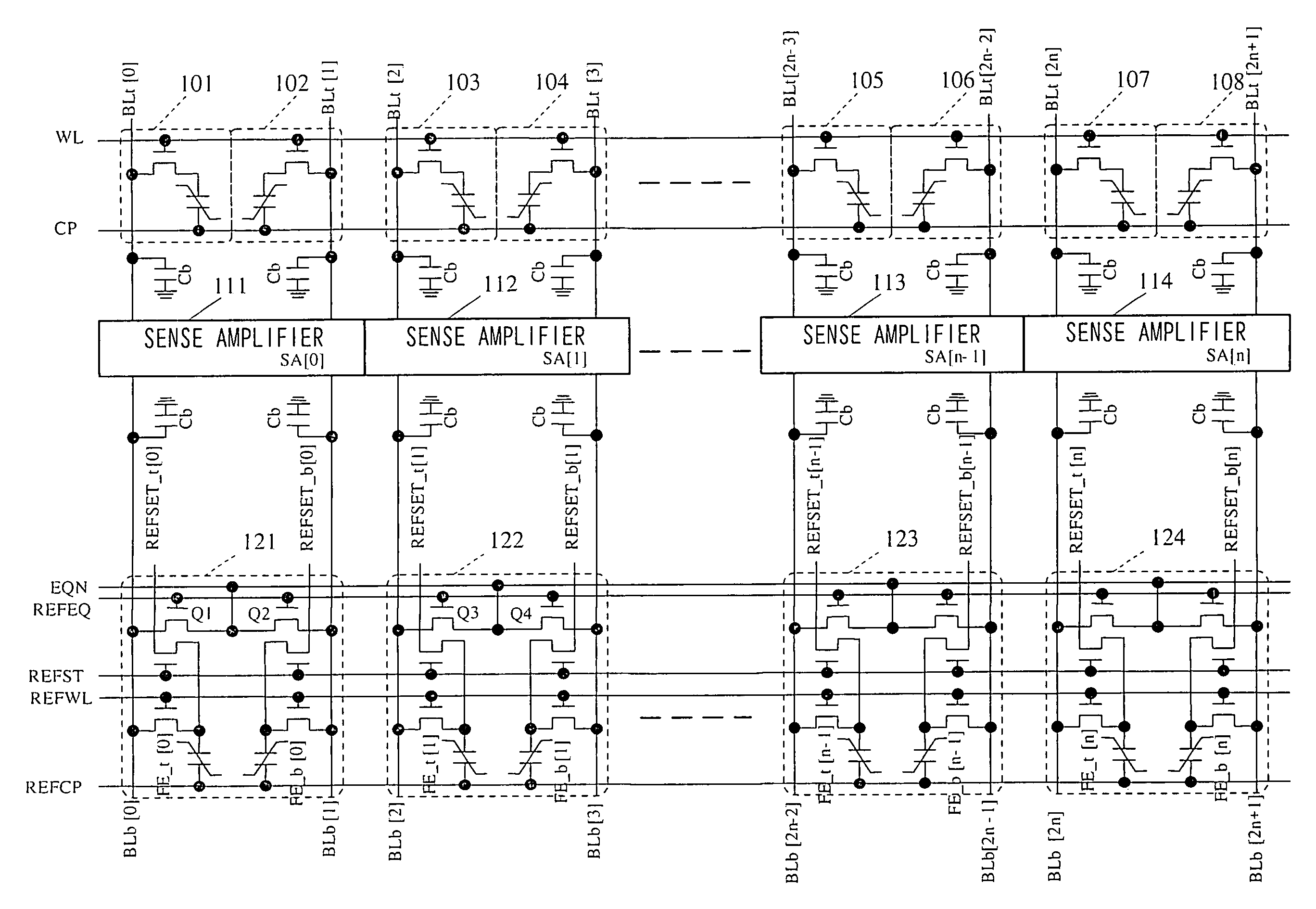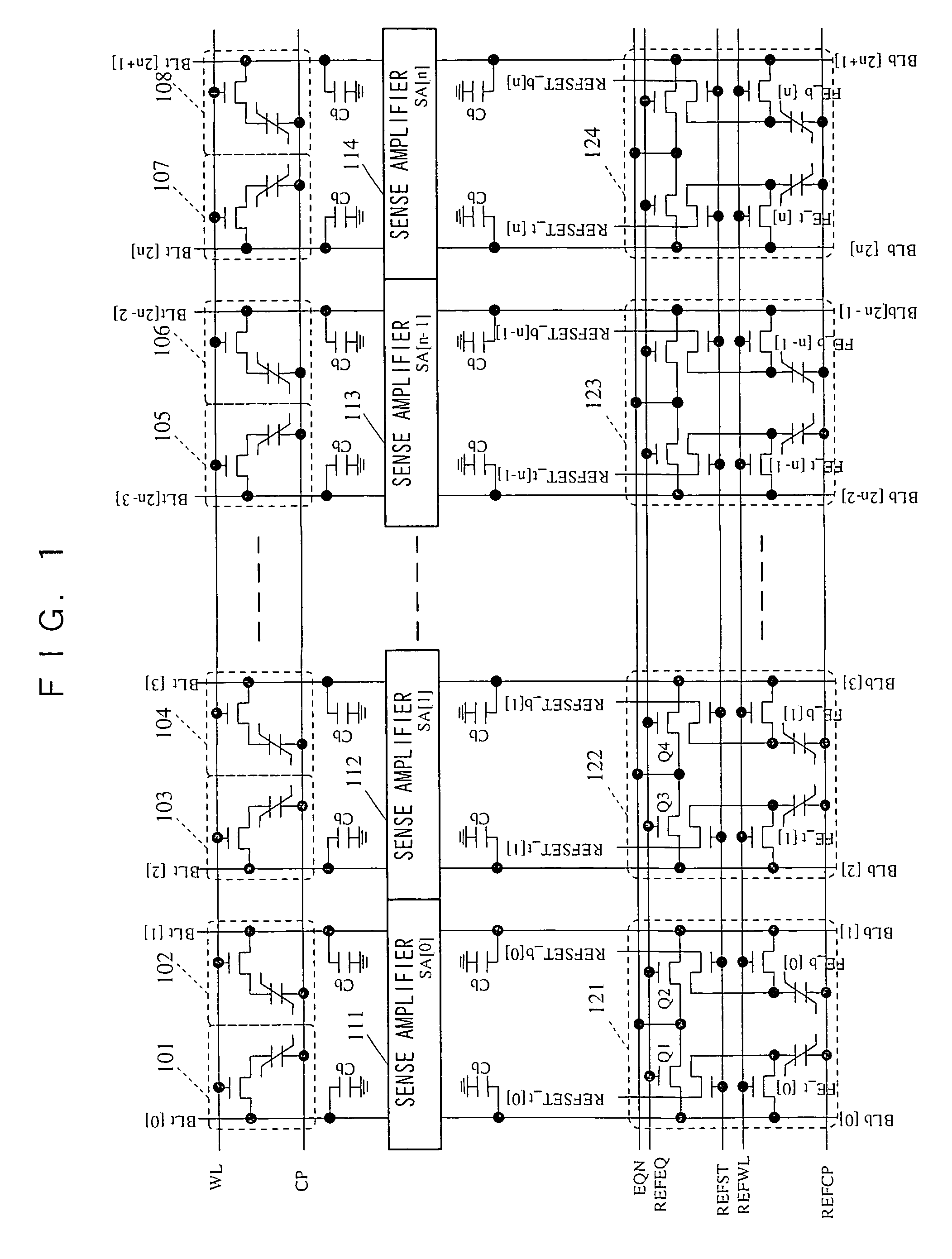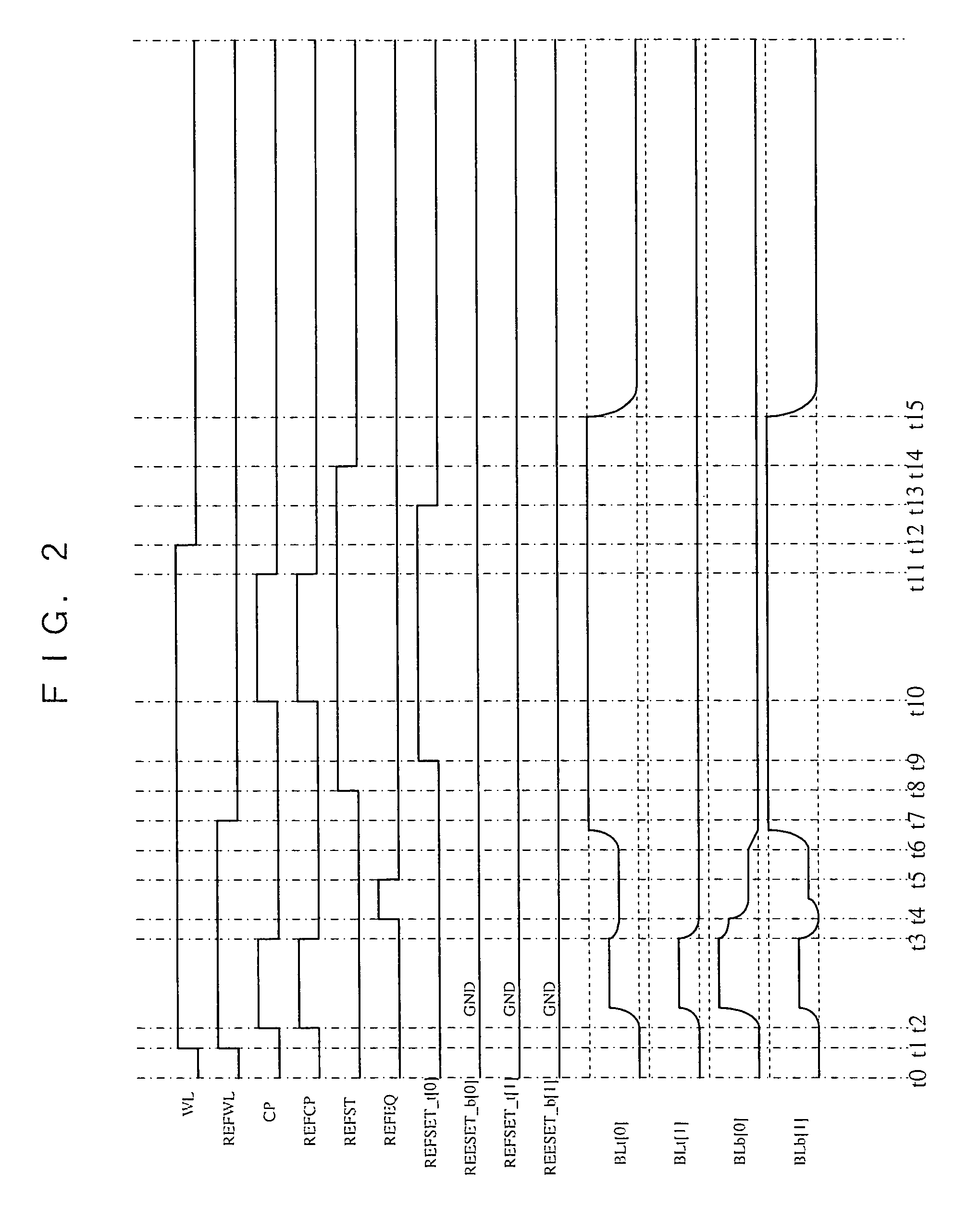Semiconductor memory device with improved memory retention
a memory device and semiconductor technology, applied in the direction of information storage, static storage, digital storage, etc., can solve the problems of ferroelectric memory having a retention problem, difficult to improve yield, large dispersion of reference potential after retention, etc., and achieve the effect of improving retention problem
- Summary
- Abstract
- Description
- Claims
- Application Information
AI Technical Summary
Benefits of technology
Problems solved by technology
Method used
Image
Examples
Embodiment Construction
[0053]Embodiments of the present invention will now be described with reference to FIG. 1 to FIG. 10.
[0054]FIG. 1 shows a configuration of a 1T1C type ferroelectric memory device according to an embodiment of the present invention.
[0055]101 to 108 are 1T1C type ferroelectric memory cells.
[0056]111 to 114 are sense amplifiers for amplifying the potential difference between the bit lines BLt [2n+1:0] and BLb [2n+1:0].
[0057]121 to 124 are reference cells for outputting the reference potential to the bit line BLb [2n+1:0]. FE_t [n:0] and FE_b [n:0] are ferroelectric capacitors. Cb are the parasitic capacitors of the bit lines BLt [2n+1:0] and BLb [2n+1:0].
[0058]WL is a word line to which a select signal for connecting the first terminals of the ferroelectric capacitors of the 1T1C type memory cells 101 to 108 to the bit line BLt [2n+1:0] is applied.
[0059]CP is a cell plate line for driving the second terminals of the ferroelectric capacitors 101 to 108 of the 1T1C type memory cells 101 ...
PUM
 Login to View More
Login to View More Abstract
Description
Claims
Application Information
 Login to View More
Login to View More - R&D
- Intellectual Property
- Life Sciences
- Materials
- Tech Scout
- Unparalleled Data Quality
- Higher Quality Content
- 60% Fewer Hallucinations
Browse by: Latest US Patents, China's latest patents, Technical Efficacy Thesaurus, Application Domain, Technology Topic, Popular Technical Reports.
© 2025 PatSnap. All rights reserved.Legal|Privacy policy|Modern Slavery Act Transparency Statement|Sitemap|About US| Contact US: help@patsnap.com



